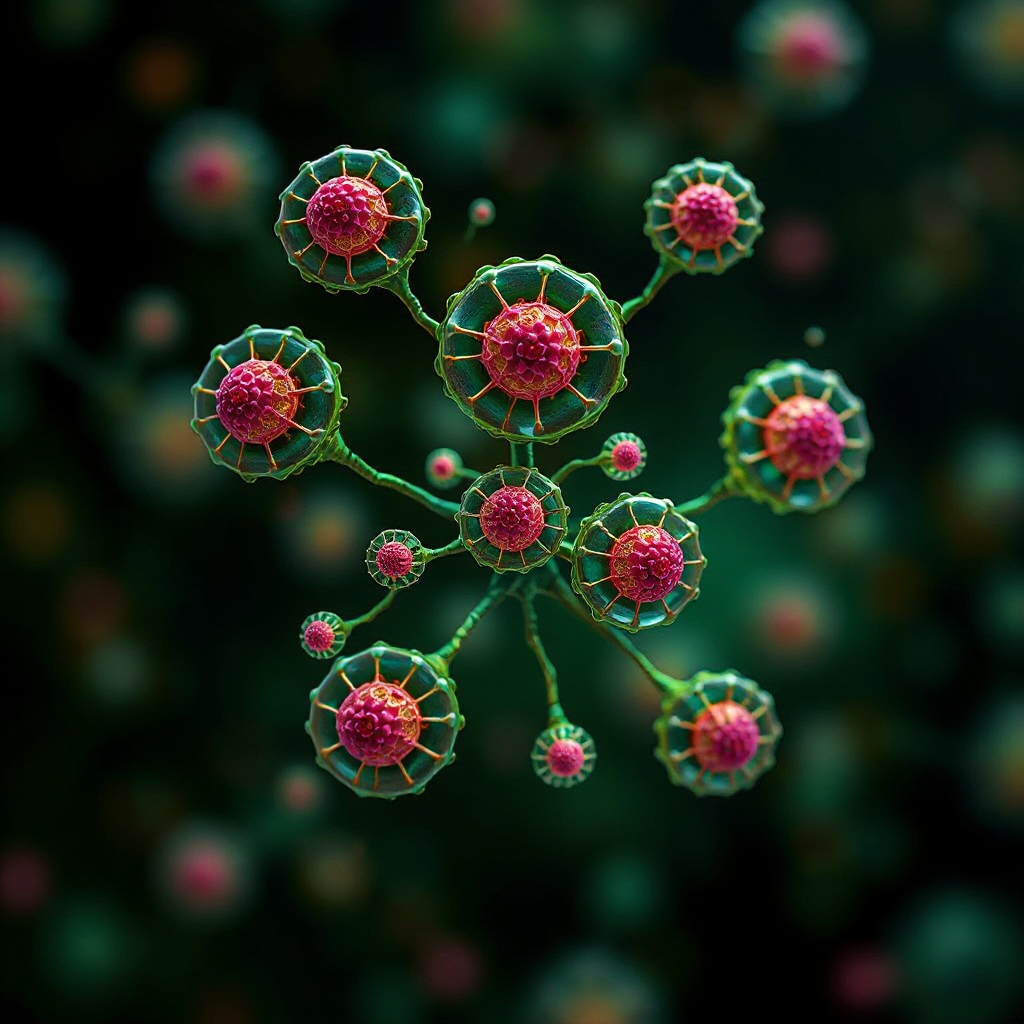What is Tubular Carcinoma and Its Key Characteristics

Tubular carcinoma is a rare type of invasive breast cancer. It accounts for only about 1.3% of all breast cancer cases, making it an uncommon diagnosis. This cancer gets its name from the tube-like structures seen under a microscope. Its slow growth and low-grade nature contribute to a more favorable prognosis compared to other breast cancer types. Studies show that survival rates for tubular carcinoma are significantly higher, especially when it appears in its pure form. Early detection plays a key role in achieving these positive outcomes.
Key Takeaways
Tubular carcinoma is a rare breast cancer, making up 1.3% of cases. Finding it early helps with better treatment results.
Symptoms include a lump in the breast or changes in size or shape. Doing self-checks often can help find these signs early.
Risk factors are age, family history, and hormone therapy. Knowing these risks can help you take steps to stay safe.
Mammograms and check-ups are important for finding it early. Using both methods improves the chances of spotting tubular carcinoma.
Tubular carcinoma has a high survival rate if found early. Regular tests and healthy habits can boost your health and recovery.
Symptoms of Tubular Carcinoma

Common Symptoms
Lump or mass in the breast
One of the most noticeable signs of tubular carcinoma is a lump or mass in the breast. You might feel this lump during a self-exam or notice it during a routine check-up. These lumps are often small and firm, making them easier to detect.
Changes in breast shape or size
Changes in the shape or size of your breast can also indicate tubular carcinoma. Swelling in the breast is a common symptom. You may observe that one breast appears larger or has an unusual contour compared to the other.
Subtle or Rare Symptoms
Pain or tenderness in the affected area
Although tubular carcinoma is typically painless, some individuals report discomfort or tenderness in the affected area. This symptom might feel like a dull ache or sensitivity when touched.
Skin changes or nipple discharge
Changes to the skin on your breast can be another sign. Look for dimpling, redness, or scaling of the skin. In some cases, the nipple may retract or produce an unusual discharge. You might also notice a lump under your arm or near your collarbone, which could indicate the spread of cancer to nearby lymph nodes.
Tip: Regular self-exams and awareness of these symptoms can help you detect tubular carcinoma early. Early detection significantly improves treatment outcomes.
Causes and Risk Factors of Tubular Carcinoma
Causes
Genetic mutations and cellular changes
Tubular carcinoma often begins with genetic mutations in breast cells. These mutations disrupt normal cell growth and division. Instead of dying off as they should, abnormal cells multiply and form a tumor. Scientists believe that changes in specific genes, such as BRCA1 and BRCA2, may increase your risk of developing this type of cancer.
Hormonal influences
Hormones play a significant role in the development of tubular carcinoma. Estrogen and progesterone, two key hormones, can stimulate the growth of breast tissue. When hormone levels become imbalanced, they may encourage the growth of abnormal cells. This is why hormone receptor-positive cancers, like tubular carcinoma, are often linked to hormonal changes in the body.
Risk Factors
Age and gender
Your age and gender are two of the most significant risk factors. Tubular carcinoma primarily affects women, especially those over the age of 50. As you age, your risk of developing this cancer increases.
Family history of breast cancer
A family history of breast cancer can also raise your risk. If close relatives, such as your mother or sister, have had breast cancer, you may have inherited genetic mutations that make you more susceptible.
Hormone replacement therapy (HRT) use
Using hormone replacement therapy (HRT) can increase your chances of developing tubular carcinoma. HRT is often prescribed to manage menopausal symptoms, but prolonged use may expose you to higher levels of estrogen and progesterone. This hormonal exposure can contribute to the growth of abnormal breast cells.
Note: Understanding these causes and risk factors can help you take proactive steps to reduce your risk. Regular screenings and a healthy lifestyle are essential for early detection and prevention.
Diagnosis of Tubular Carcinoma
Screening Methods
Mammogram and ultrasound imaging
Mammograms play a crucial role in detecting tubular carcinoma early. These imaging tests use low-dose X-rays to identify abnormalities in breast tissue. Tubular carcinoma often appears as a small, spiculated mass on a mammogram. Ultrasound imaging complements mammograms by providing detailed images of the lump's structure. This method helps distinguish between solid masses and fluid-filled cysts.
Physical examination by a healthcare provider
A physical exam allows your healthcare provider to assess any unusual changes in your breast. They may feel for lumps, check for skin changes, or examine the nipple for discharge. This hands-on approach helps identify potential signs of tubular carcinoma that imaging tests might miss.
Tip: Combining regular mammograms with physical exams increases the chances of detecting tubular carcinoma at an early stage.
Confirmatory Tests
Biopsy and histological analysis
A biopsy confirms the diagnosis of tubular carcinoma. During this procedure, your doctor removes a small sample of breast tissue. Pathologists then analyze the sample under a microscope to identify cancerous cells. This step is essential for distinguishing tubular carcinoma from other types of breast cancer.
Identifying tubular structures under a microscope
Pathologists look for specific histological features to confirm tubular carcinoma. These features include:
Histological Feature | Description |
|---|---|
Distribution of Tubules | Haphazard distribution of rounded and angulated tubules with open lumina in more than 90% of tumor tissue |
Epithelial Cell Layer | A single layer of epithelial cells without significant atypia |
Stroma Presence | Presence of abundant desmoplastic or fibro-elastotic stroma around the tubules |
These unique characteristics help ensure an accurate diagnosis. Identifying tubular structures is critical because it confirms the low-grade nature of this cancer, which often leads to a favorable prognosis.
Note: Early and accurate diagnosis of tubular carcinoma improves treatment outcomes and survival rates.
Treatment Options for Tubular Carcinoma

Surgical Treatments
Lumpectomy (breast-conserving surgery)
A lumpectomy removes the tumor while preserving most of your breast tissue. This option is often recommended for tubular carcinoma due to its localized nature. Studies show that combining lumpectomy with radiation therapy improves overall survival (OS) and reduces recurrence rates. For example, a retrospective study found that patients who underwent breast-conserving surgery followed by radiotherapy had a 5-year recurrence-free survival rate of 100%. This approach ensures effective treatment while maintaining the appearance of your breast.
Mastectomy (complete removal of the breast)
In some cases, a mastectomy may be necessary. This procedure involves removing the entire breast to eliminate cancerous tissue. It is typically reserved for larger tumors or when multiple areas of the breast are affected. While a mastectomy may seem more invasive, it offers peace of mind by significantly reducing the risk of recurrence. Your doctor will help you decide the best surgical option based on your specific diagnosis.
Additional Therapies
Radiation therapy to target remaining cancer cells
Radiation therapy is often recommended after a lumpectomy. It targets any remaining cancer cells, reducing the risk of recurrence. Research highlights its effectiveness, with one study showing a 10-year survival rate of 85.9% for patients who received radiotherapy compared to 76.3% for those who did not. This therapy is a critical step in ensuring long-term success after surgery.
Hormonal therapy for hormone receptor-positive cases
If your tubular carcinoma is hormone receptor-positive, hormonal therapy may be part of your treatment plan. This therapy blocks hormones like estrogen from fueling cancer growth. Medications such as tamoxifen or aromatase inhibitors are commonly used. Hormonal therapy is particularly effective in preventing recurrence and improving survival rates for hormone-sensitive cancers.
Chemotherapy (rarely required for tubular carcinoma)
Chemotherapy is rarely needed for tubular carcinoma due to its low-grade nature. However, your doctor might recommend it if the cancer shows aggressive features or spreads beyond the breast. Chemotherapy uses powerful drugs to destroy cancer cells throughout your body. While it is not a standard treatment for tubular carcinoma, it remains an option in specific cases.
Tip: Discuss all treatment options with your healthcare provider to choose the best plan for your needs. Combining surgery with additional therapies often leads to the most favorable outcomes.
Prognosis and Survival Rates of Tubular Carcinoma
Favorable Outcomes
High survival rates due to early detection
Tubular carcinoma has one of the most favorable survival rates among breast cancers. Early detection plays a crucial role in achieving these outcomes. Regular mammograms often identify this cancer at an early stage, when it is less aggressive and easier to treat. Studies show that the 10-year survival rate for tubular carcinoma alone is as high as 97%. The Stuttgart cohort reported a survival rate of 96.37%, while other studies indicated rates of 88% and 94%.
Type of Carcinoma | 10-Year Survival Rate |
|---|---|
Tubular Carcinoma Alone | 97% |
Mixed Tubular Carcinoma | Lower than 97% |
These statistics highlight the importance of early detection and timely treatment in improving survival outcomes.
Low likelihood of metastasis
Tubular carcinoma rarely spreads to other parts of the body. Its low-grade nature means it grows slowly and is less likely to invade nearby tissues or distant organs. This characteristic significantly reduces the risk of metastasis, contributing to its excellent prognosis.
Tip: Regular screenings and prompt medical attention can help you detect tubular carcinoma early, ensuring better outcomes.
Factors Influencing Prognosis
Stage at diagnosis
The stage at which tubular carcinoma is diagnosed greatly impacts your prognosis. When detected early, the cancer is localized and responds well to treatment. Regular mammograms improve the chances of catching it at an earlier stage, leading to better outcomes.
Overall health and response to treatment
Your overall health and how well your body responds to treatment also influence the prognosis. A strong immune system and adherence to the recommended treatment plan can improve recovery. Factors like age, lifestyle, and pre-existing conditions may also play a role in determining your long-term outlook.
Note: Maintaining a healthy lifestyle and following your doctor’s advice can enhance your body’s ability to recover and reduce the risk of recurrence.
Tubular carcinoma is a rare but manageable form of breast cancer. You now know its key characteristics, symptoms, and treatment options. Early detection plays a vital role in improving outcomes. Regular screenings offer several benefits: they help identify tubular carcinoma early, enable timely treatment, and improve survival rates. With its low likelihood of spreading and high survival rates, this cancer type has a generally positive prognosis. Staying informed and proactive about your health ensures the best possible outcomes.
FAQ
What makes tubular carcinoma different from other breast cancers?
Tubular carcinoma grows slowly and has a low-grade nature. Its tube-like structures under a microscope set it apart. It rarely spreads and has a higher survival rate compared to other invasive breast cancers.
Can men develop tubular carcinoma?
Yes, though rare, men can develop tubular carcinoma. Breast cancer in men accounts for less than 1% of cases, and tubular carcinoma is even less common. Regular check-ups help detect any unusual changes early.
How often should you get screened for tubular carcinoma?
You should follow your doctor’s recommendations. Generally, women over 40 should have annual mammograms. If you have a family history of breast cancer, start earlier and include additional imaging tests like ultrasounds.
Is tubular carcinoma hereditary?
Tubular carcinoma may have a genetic link. Mutations in genes like BRCA1 or BRCA2 can increase your risk. If breast cancer runs in your family, genetic counseling and testing can help assess your risk.
Can lifestyle changes reduce your risk of tubular carcinoma?
Yes, maintaining a healthy lifestyle can lower your risk. Eat a balanced diet, exercise regularly, and avoid smoking. Limiting alcohol and discussing hormone replacement therapy with your doctor also help reduce risk.
Tip: Stay proactive about your health. Regular screenings and a healthy lifestyle are your best defenses against tubular carcinoma.
See Also
Cholangiocarcinoma: Essential Insights Into Its Main Features
Fibrosarcoma: An Overview of Its Important Traits
Keratoacanthoma: Key Aspects You Need to Know
Essential Information About Carcinoid Tumors You Should Understand
